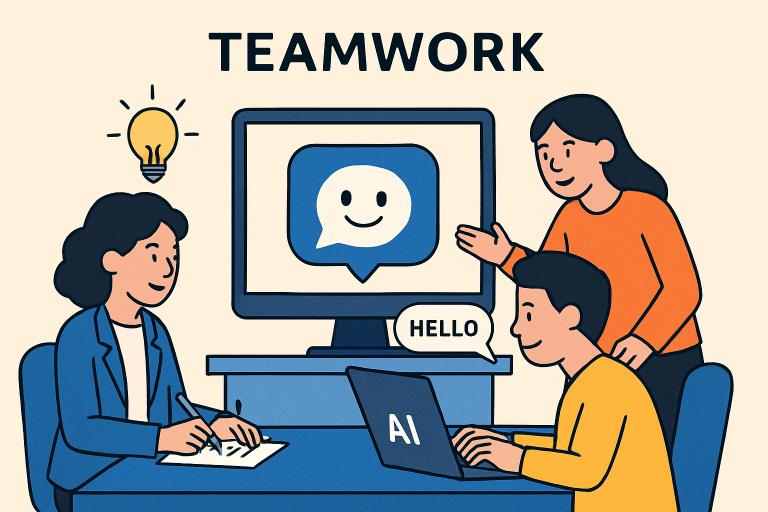Now Reading: Future-Ready Workspaces: Adapting to the Rise of Virtual Assistants
-
01
Future-Ready Workspaces: Adapting to the Rise of Virtual Assistants
Future-Ready Workspaces: Adapting to the Rise of Virtual Assistants

Key Takeaways
- Virtual assistants reshape work environments by automating tasks and enabling remote collaboration.
- Successful integration depends on careful tool selection, staff training, and ongoing optimization.
- Embracing this technology supports higher efficiency, cost reductions, and a more adaptable workforce.
Introduction
The future of work is evolving rapidly, driven by the growing use of virtual assistants in daily business operations. As organizations look to maximize productivity and enable greater flexibility, virtual assistants play an increasingly central role in modern workspaces’ function. Hiring experts to help implement and manage these solutions can make all the difference for companies seeking to streamline operations. Consider exploring options to hire an agency for virtual assistants early in your digital transformation journey.
From automating daily tasks to facilitating seamless remote collaboration, virtual assistants are transforming work’s physical and digital dimensions. Their emergence presents new opportunities—and challenges—for businesses aiming to stay future-ready. As virtual assistants become more deeply integrated into organizational processes, forward-thinking companies must adapt their workplace culture, technology, and training to unlock the full benefits of this innovative technology.
Whether you lead a startup or a multinational enterprise, understanding virtual assistants’ strategic value and implementation steps is key to ensuring your workplace remains competitive and efficient. By thoughtfully planning for integration and supporting your team throughout the transition, you can harness the next evolution in workplace productivity, agility, and employee experience.
With the trend towards flexible and remote work accelerating, it is more important than ever to recognize and address virtual assistant adoption’s unique challenges and opportunities. Successful integration boosts day-to-day efficiency and positions your organization to adapt to rapid changes in technology and workforce expectations.
Understanding Virtual Assistants
Virtual assistants are AI-powered programs or platforms that can perform various workplace tasks traditionally carried out by humans. These digital helpers manage calendars, coordinate meetings, answer frequently asked questions, assist with document preparation, and help facilitate strategic decision-making. The technology behind virtual assistants—ranging from advanced chatbots to voice-activated systems—creates more flexible and efficient working environments for organizations of all sizes.
Recent advancements mean that virtual assistants are becoming more intelligent and adaptable. They are capable of understanding nuanced instructions and learning user preferences over time. This makes them valuable assets not only for individual users but also as integral parts of team workflows and organizational processes.
Benefits of Integrating Virtual Assistants
The impact of virtual assistants on workplace productivity and culture cannot be overstated. By automating repetitive and time-consuming tasks, employees are free to focus on creative, strategic, and revenue-driving activities. This newfound efficiency often translates into significant cost savings, especially for businesses looking to do more with less.
- Increased Productivity:Task automation by virtual assistants allows workers to direct their efforts toward higher-value tasks, boosting overall team output.
- Cost Efficiency:Reducing manual workload minimizes the need for additional hires while optimizing resource allocation.
- Enhanced Flexibility:Many virtual assistants are cloud-based, enabling remote access and seamless collaboration across dispersed teams.
Major business publications like Forbes confirm that work is trending toward more adaptable, AI-enabled arrangements—pointing to the critical role of virtual assistants in the coming years.
Steps to Implement Virtual Assistants in Your Workspace
Successfully integrating virtual assistants requires more than technology adoption; it involves a strategic, phased approach to ensure alignment with business objectives and user needs.
- Assess Your Needs:Analyze workflow bottlenecks and repetitive processes that could be improved through automation.
- Choose the Right Tools:Research and select platforms that match your operational requirements and existing tech infrastructure.
- Train Your Team:Invest in comprehensive onboarding and training so your staff can confidently leverage the new tools.
- Monitor and Optimize:Continuously track the virtual assistant’s performance using KPIs and make iterative improvements as you gather user feedback.
Involving your IT and HR teams from the start ensures technical and cultural compatibility, while fostering a sense of ownership and buy-in among staff.
Industry experts at Harvard Business Review advise identifying champions within departments who can lead by example, further smoothing the transition and raising awareness of day-to-day advantages.
Overcoming Challenges in Adoption
Adopting virtual assistants can provoke various challenges—ranging from cultural resistance to concerns over security—that organizations must address head-on to maximize the benefits.
- Resistance to Change:Employees may fear new technologies disrupting their routines or job security. Transparent leadership communication and targeted training can ease these anxieties and promote a sense of inclusion.
- Data Security:Since sensitive information is processed, it’s vital to select virtual assistants that comply with international and local data protection standards, minimizing risk exposure.
- Integration Issues:Ensuring seamless functionality between virtual assistants and legacy systems requires a careful, staged rollout, often with IT support on standby for troubleshooting.
Proactive support and frequent feedback loops help organizations manage expectations during transition, ultimately leading to smoother adoption and long-term success.
Future Trends in Virtual Assistant Technology
Virtual assistant technology is developing rapidly, with several emergent trends poised to reshape workspaces even further:
- Enhanced AI Capabilities:Ongoing improvements in natural language processing and machine learning allow virtual assistants to understand context, intent, and sentiment, making interactions far more intuitive.
- Integration with IoT Devices:As smart office hardware proliferates, virtual assistants coordinate everything from environmental controls to security systems, creating connected and responsive workplaces.
- Proactive Assistance:AI-powered assistants will move beyond reactive support, anticipating users’ needs and offering timely suggestions or solutions before being prompted.
Recent research, such as the ProPerSim study, illustrates the potential for highly personalized and proactive AI-driven support through user-assistant simulations—signaling a shift toward more adaptive and autonomous virtual assistants.
Conclusion
Staying future-ready in an age of digital transformation means proactively adapting to the new possibilities presented by virtual assistants. Approaching adoption with a clear strategy, ongoing training, and a willingness to embrace change can empower organizations to unlock new levels of productivity, flexibility, and innovation. By leveraging best practices and closely watching emerging trends, businesses can position themselves at the leading edge of workplace evolution.




















